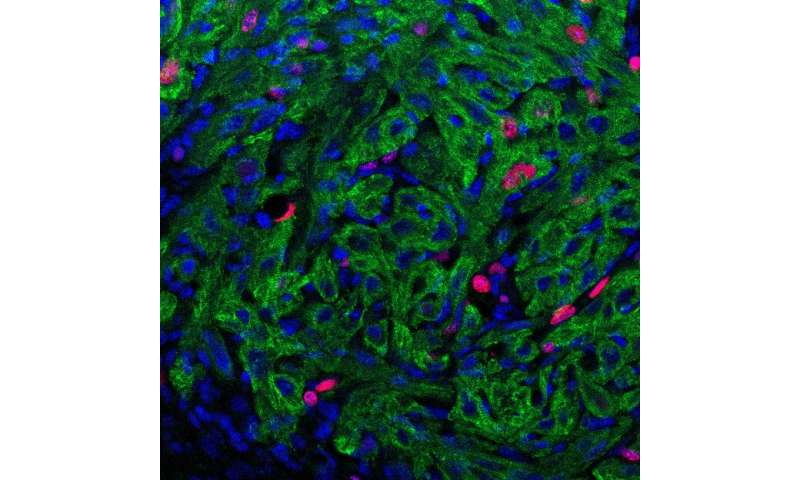
The Texas Heart Institute has announced that a new study from its prolific Cardiomyocyte Renewal Lab has been published in Circulation Research—a peer-reviewed journal from the American Heart Association that reaches clinical and academic cardiologists, basic cardiovascular scientists, physiologists, cellular and molecular biologists, and cardiovascular pharmacologists. The new study identifies that the Wntless (Wls) gene plays a critical role in heart regeneration in mice. Wls facilitates signal molecule secretion from cardiomyocytes (heart muscle cells) to cardiac fibroblasts—cells that produce connective tissue—in order to suppress CF activation, which in turn promotes heart functional recovery by reducing scar formation.
“In this study, we learned that the Hippo pathway, an inhibitory genetic mechanism, regulates cardiac scar formation based upon cross-communication between cardiomyocytes and cardiac fibroblasts vis-à-vis the Wnt signaling pathway; based upon this discovery, we are able to reduce scarring that is formed by fibroblasts following a myocardial infarction (heart attack) in neonatal mouse hearts,” emphasized Shijie Liu, a research scientist in the Texas Heart Institute Cardiomyocyte Renewal Laboratory and a co-author on the study.
Liu has worked closely with Dr. James Martin, Director of the Cardiomyocyte Renewal Lab, on several studies, including a recently published study in Science Translational Medicine that represents a game-changing step forward for the treatment of heart failure using gene therapy to regenerate heart muscle following myocardial infarction. Liu previously spent time at the University of North Carolina working on oncology research before transitioning to cardiovascular investigation in 2016 under Martin’s tutelage at the Texas Heart Institute.

“Moving forward, we hope to build upon the animal model for heart regeneration that has been developed through this research and will continue to press forward on working to understand the cross-talk that happens between cardiomyocytes and cardiac fibroblasts, which is a complex realm of study that involves a number of different cell conversations occurring simultaneously,” Liu added. He concluded, “Further research could potentially lead to heart regeneration treatments that work in multiple ways instead of just one. We are optimistic about where this research is headed based upon this study in tandem with the paper we published a few months ago. The future is very bright, and I am excited to continue working with Dr. Martin and his team at the Texas Heart Institute.”
Texas Heart Institute’s Cardiomyocyte Renewal Laboratory focuses on understanding how genetic pathways are connected to adult tissue homeostasis and regeneration. By obtaining an in-depth understanding of these pathways, the team cultivates techniques to prevent disorders like heart failure and atrial fibrillation and develops new treatments to ameliorate heart disease. The newly published study, Yap Promotes Noncanonical Wnt Signals from Cardiomyocytes for Heart Regeneration, represents the latest in a number of research breakthroughs for the department.
Texas Heart Institute

